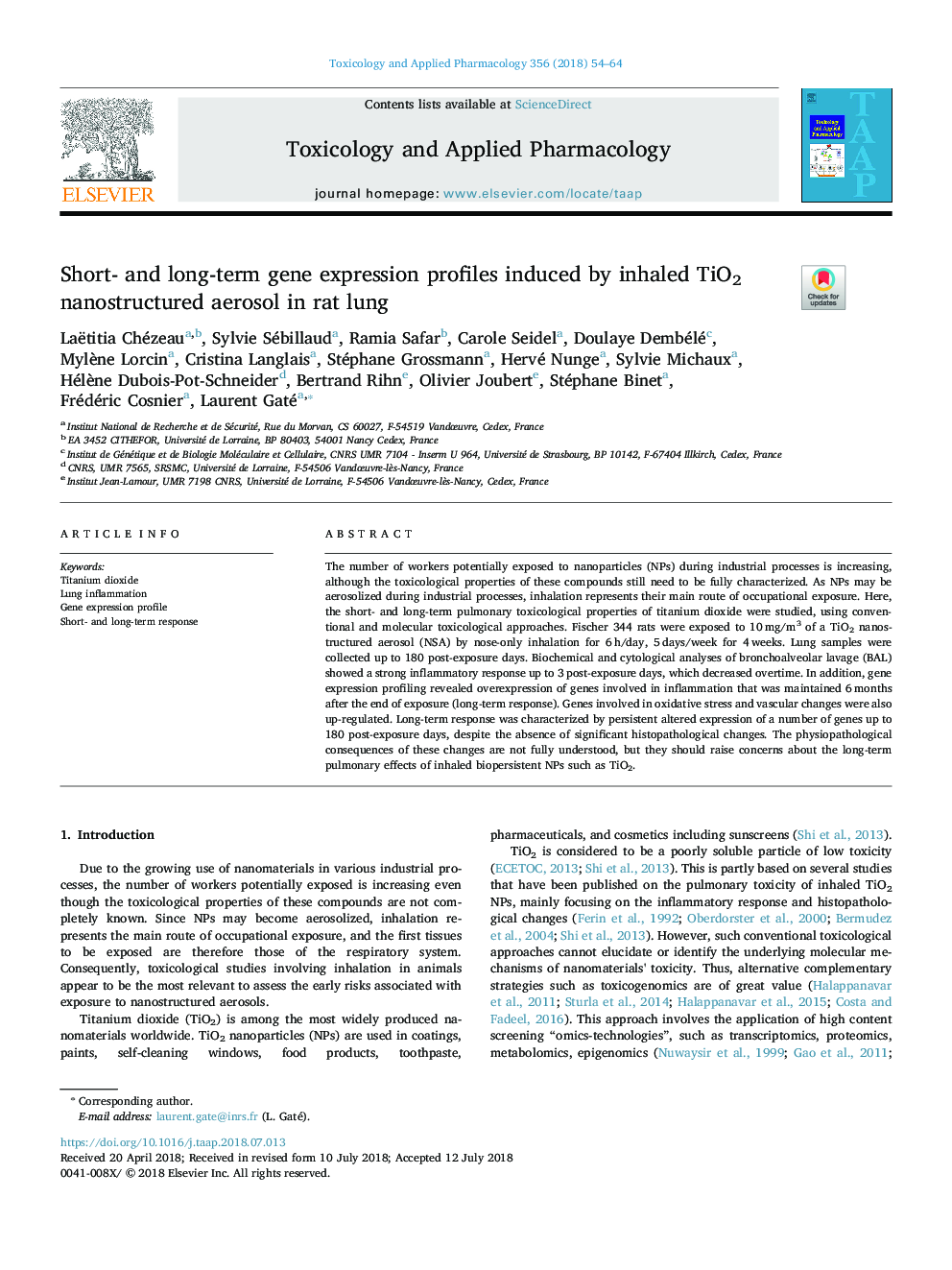| Article ID | Journal | Published Year | Pages | File Type |
|---|---|---|---|---|
| 8537992 | Toxicology and Applied Pharmacology | 2018 | 11 Pages |
Abstract
The number of workers potentially exposed to nanoparticles (NPs) during industrial processes is increasing, although the toxicological properties of these compounds still need to be fully characterized. As NPs may be aerosolized during industrial processes, inhalation represents their main route of occupational exposure. Here, the short- and long-term pulmonary toxicological properties of titanium dioxide were studied, using conventional and molecular toxicological approaches. Fischer 344 rats were exposed to 10â¯mg/m3 of a TiO2 nanostructured aerosol (NSA) by nose-only inhalation for 6â¯h/day, 5â¯days/week for 4â¯weeks. Lung samples were collected up to 180 post-exposure days. Biochemical and cytological analyses of bronchoalveolar lavage (BAL) showed a strong inflammatory response up to 3 post-exposure days, which decreased overtime. In addition, gene expression profiling revealed overexpression of genes involved in inflammation that was maintained 6â¯months after the end of exposure (long-term response). Genes involved in oxidative stress and vascular changes were also up-regulated. Long-term response was characterized by persistent altered expression of a number of genes up to 180 post-exposure days, despite the absence of significant histopathological changes. The physiopathological consequences of these changes are not fully understood, but they should raise concerns about the long-term pulmonary effects of inhaled biopersistent NPs such as TiO2.
Related Topics
Life Sciences
Environmental Science
Health, Toxicology and Mutagenesis
Authors
Laëtitia Chézeau, Sylvie Sébillaud, Ramia Safar, Carole Seidel, Doulaye Dembélé, Mylène Lorcin, Cristina Langlais, Stéphane Grossmann, Hervé Nunge, Sylvie Michaux, Hélène Dubois-Pot-Schneider, Bertrand Rihn, Olivier Joubert, Stéphane Binet,
